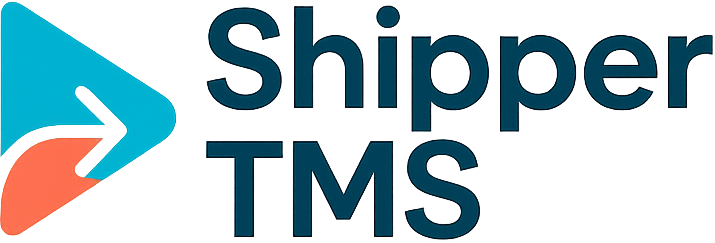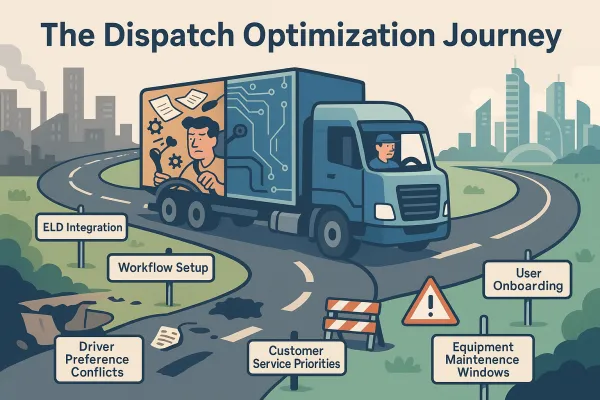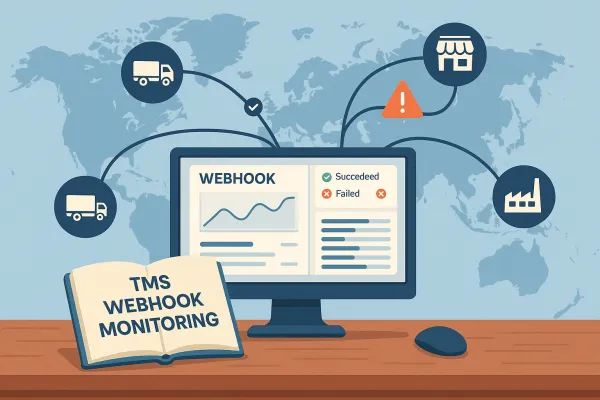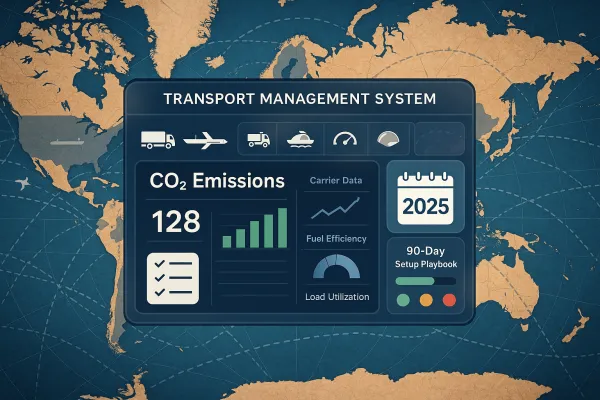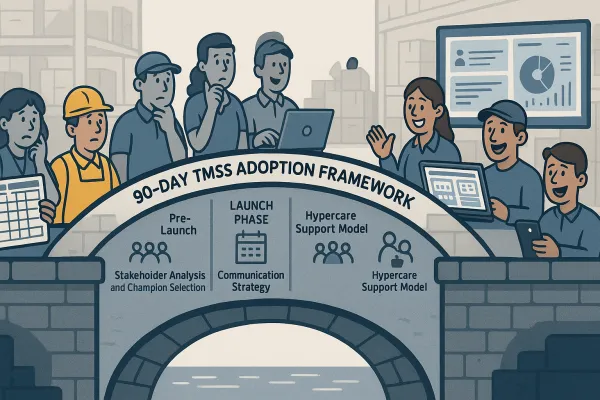TMS Post Go-Live Stabilization: The 30-Day Operations Playbook That Prevents 80% of Day-2 Failures
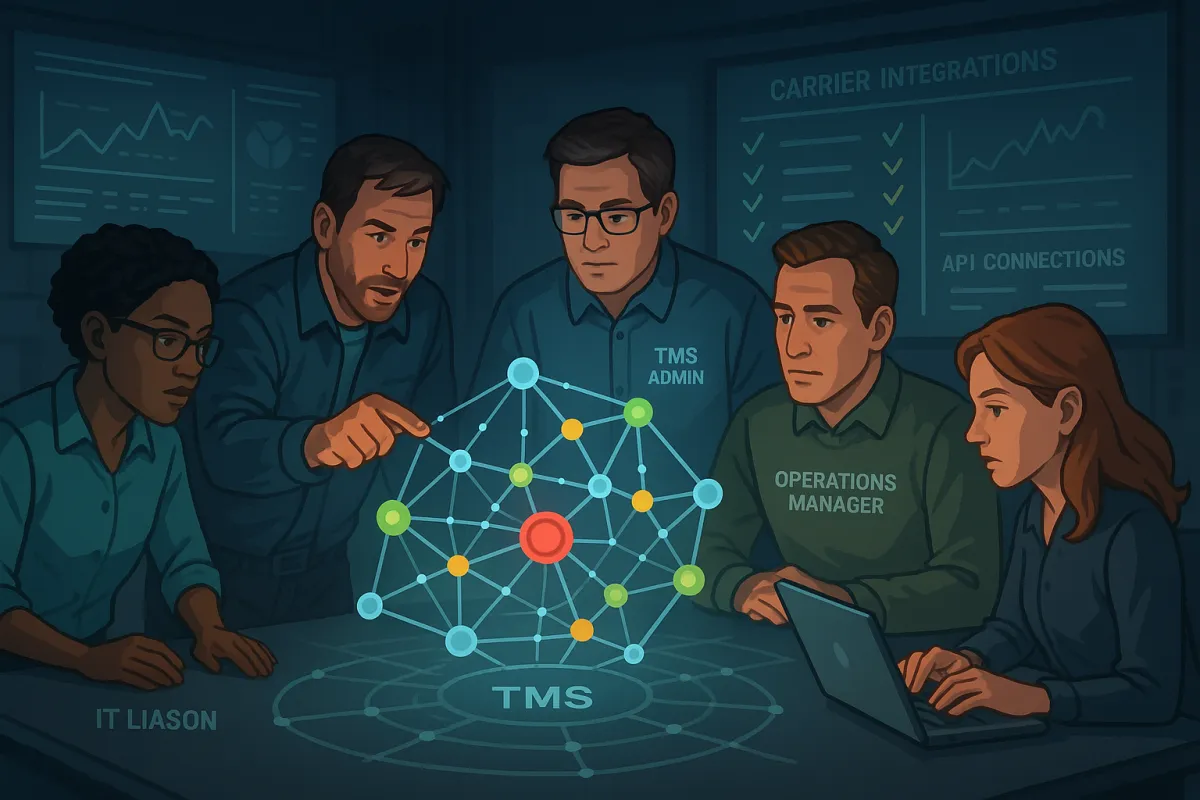
Most TMS teams go into go-live thinking the hardest work is behind them. Wrong. More than 50% of TMS adopters see positive ROI within 18 months, but that leaves a substantial portion of companies wrestling with disappointing results. The month after go-live determines which group you'll land in.
Your shiny new system is running, users have their logins, and executives expect immediate results. But here's what happens next: Incompatibility issues, data synchronization problems, and process integration complexities can hinder seamless operations, while lack of understanding/training in the system can lead to frustration. Meanwhile, experienced freight coordinators who've been managing carriers and routes for years resist abandoning methods that work for them, especially when nobody explains why the new system is actually better.
This 30-day stabilization playbook prevents those failures by giving you week-by-week actions that address the real problems TMS teams face after deployment.
Week 1 (Days 1-7): Emergency Response and Immediate Triage
The first week after go-live is chaos wrapped in urgency. Not all users have to be super users on day one, but a few will go a long way during the first week or two after go-live. Your priority isn't perfection – it's keeping freight moving while you stabilize the system.
Day 1-2: Establish Your War Room
Set up a dedicated command center with your core team available from 6 AM to 8 PM. Include your TMS admin, IT liaison, operations manager, and at least two super users. Create a simple escalation matrix: Level 1 (user training issues), Level 2 (system configuration problems), and Level 3 (critical integration failures that stop operations).
Document every issue in a shared system. You'll see patterns emerge by day three.
Day 3-5: Manual Fallback Procedures
Yes, you implemented a TMS to get away from spreadsheets. But smart teams keep manual backup processes ready for the first week. Create simple templates for carrier communication, load tendering, and status updates. Your operations team needs confidence they can keep freight moving even when the system hiccups.
Day 6-7: First Data Quality Review
Run reports on every load that moved through the system. Check for incomplete carrier assignments, missing delivery appointments, and incorrect rate calculations. During the integration process, organizations may encounter issues with data migration, where transferring large amounts of data from the old system to the new TMS can be time-consuming and prone to errors.
Schedule 30-minute daily huddles with your team through week one. Address yesterday's problems, today's priorities, and tomorrow's potential issues.
Week 2 (Days 8-14): Data Validation and Integration Troubleshooting
Week two reveals the integration problems that testing missed. Integrating a new TMS with existing systems, such as Enterprise Resource Planning (ERP) or warehouse management systems, can present a significant challenge. Incompatibility issues, data synchronization problems, and process integration complexities can hinder seamless operations.
API Connection Verification
Work with your IT team to monitor API calls between your TMS and other systems. Look for failed connections, timeout errors, and data transmission delays. Document the exact error messages and timestamps. Most integration problems stem from authentication issues or data format mismatches that weren't caught during testing.
Carrier Integration Deep Dive
Test every carrier connection with live loads. Verify that electronic tendering works, tracking updates flow correctly, and invoice data matches your expectations. The carriers are responsible for accepting freight, updating the load and FA&P issues. The better the TMS flow, the better the carriers will respond and work with your team.
Create a carrier integration status board. Mark each carrier as green (fully functional), yellow (minor issues), or red (major problems). Focus your efforts on the carriers that handle 80% of your volume.
Data Mapping Validation
Review how data flows from your TMS to your ERP, WMS, and financial systems. Common problems include customer codes that don't match, item numbers that get truncated, and address formats that cause delivery failures. Build a mapping document that shows exactly how each data field translates between systems.
By the end of week two, you should have a clear picture of which integrations work reliably and which need immediate attention.
Week 3 (Days 15-21): Performance Optimization and User Adoption
Week three is when the real work begins. Your system is stable enough for optimization, but user adoption challenges become obvious. In the first couple weeks of a new TMS, I'm more concerned with the overall experience of my team. Are they happy with the new TMS and are they able to accomplish more in app? Time is everything so I want to make sure my team can handle more tasks in a single place.
Rate Comparison Validation
Compare your TMS rate calculations against historical data for the same lanes. Look for discrepancies in fuel surcharges, accessorial charges, and zone skipping logic. Run parallel comparisons for two weeks using both your old method and the TMS to validate accuracy.
Exception Handling Refinement
Document every exception that requires manual intervention. Common examples include oversized shipments, hazmat requirements, and delivery appointment restrictions. Configure automated workflows for the exceptions that repeat most often.
Workflow Optimization
Shadow your operations team for half-day sessions. Count how many clicks it takes to complete common tasks like creating a shipment, adding stops, or updating delivery status. Look for workflow bottlenecks where users toggle between multiple screens or re-enter the same data.
Solutions like Cargoson, MercuryGate, Descartes, and Oracle TM offer different approaches to workflow optimization. The key is matching your team's work patterns to the system's design.
Week 4 (Days 22-30): Long-term Stability and Continuous Improvement
Week four shifts focus from fixing problems to building sustainable processes. Go-live isn't the finish line—it's the starting point for long-term value. Successful TMS implementation isn't just about getting the software live—it's about ensuring the software continues to drive performance.
ROI Measurement Framework
Establish baseline metrics for freight spend, on-time delivery, and administrative time. Even small improvements matter – a 2-3% reduction in freight costs during week four demonstrates early success. Track specific KPIs like carrier performance scores, invoice processing time, and shipment visibility.
User Feedback Loops
Create formal channels for ongoing user feedback. Weekly team meetings, monthly user surveys, and quarterly system reviews prevent problems from building up. Address the most common user complaints within 48 hours when possible.
Documentation and Knowledge Transfer
Document your configuration decisions, custom workflows, and integration logic. Include screenshots of key screens and step-by-step instructions for complex processes. This documentation becomes critical when you onboard new team members or need to troubleshoot issues months later.
The 30-Day Stabilization Checklist: Week-by-Week Action Items
Week 1 Deliverables:
- War room established with clear escalation procedures
- Manual fallback processes documented and tested
- Daily data quality reports running
- Critical issues log with resolution tracking
Week 2 Deliverables:
- All carrier integrations tested with live loads
- API connection monitoring in place
- Data mapping document completed
- Integration status dashboard updated daily
Week 3 Deliverables:
- Rate calculation validation completed
- Exception handling workflows configured
- User workflow optimization identified
- Training gaps documented and addressed
Week 4 Deliverables:
- ROI measurement framework established
- User feedback processes implemented
- System documentation completed
- 30-day performance review conducted
Common Day-2 Failures and How to Prevent Them
The most expensive TMS failures aren't technical – they're organizational. People keep using old processes because nobody explained why the new ones matter. Here are the patterns that derail implementations and specific actions to prevent them.
Data Quality Deterioration
Users bypass required fields or enter incomplete information when the system feels slow or confusing. Prevention: Set up automated data validation rules and provide real-time feedback when users enter incomplete information. Make required fields obvious and explain why the data matters.
Integration Breakdown
Integration projects drag on for months while teams juggle multiple systems that don't talk to each other. Prevention: Test integrations with production data volumes, not just sample records. Monitor API performance continuously and set up alerts for connection failures.
User Resistance
Teams revert to familiar processes when the TMS doesn't match their workflow expectations. Prevention: Involve your heaviest users in system configuration decisions. Show them how the TMS solves their specific daily frustrations, not just generic efficiency improvements.
Process Gaps
Edge cases that worked fine manually break when forced through automated workflows. Prevention: Map your exception handling processes before go-live. Configure automated workflows for common exceptions and manual override procedures for unusual situations.
Platforms like FreightPOP, 3Gtms, Transporeon, and Blue Yonder alongside Cargoson offer different strengths in handling these common failure patterns. The key is matching your specific operational challenges to each platform's capabilities.
Your TMS implementation doesn't end at go-live – it starts there. The first 30 days determine whether you'll see real ROI or join the substantial portion of companies struggling with disappointing results. Follow this playbook, adapt it to your specific situation, and avoid the failures that derail most implementations.
